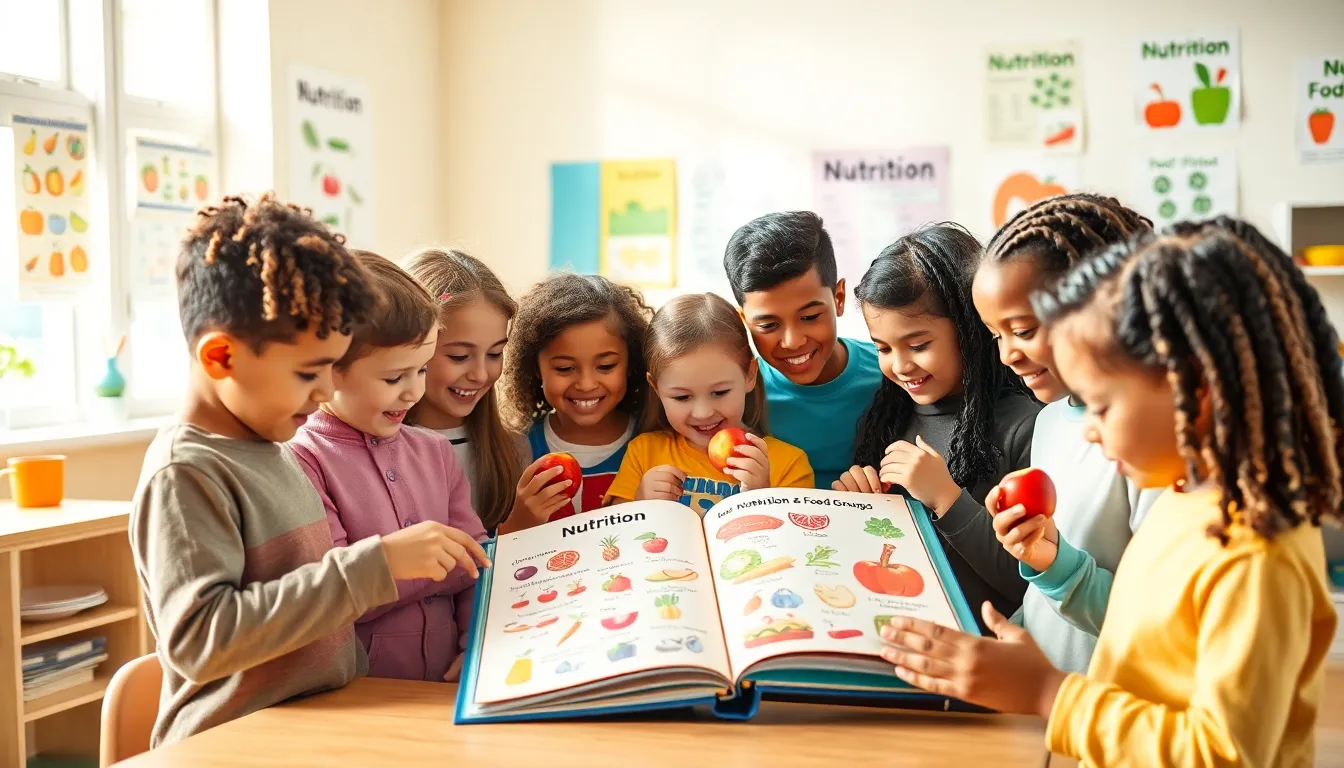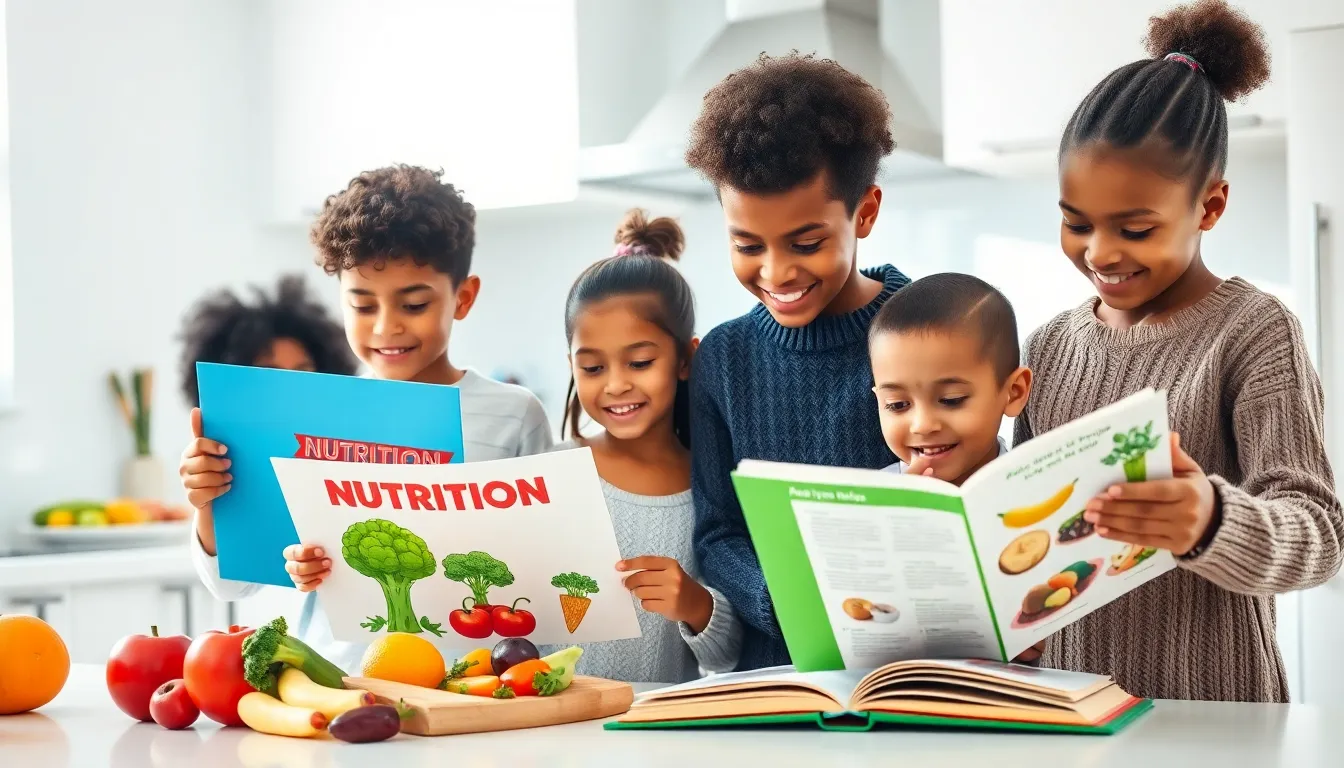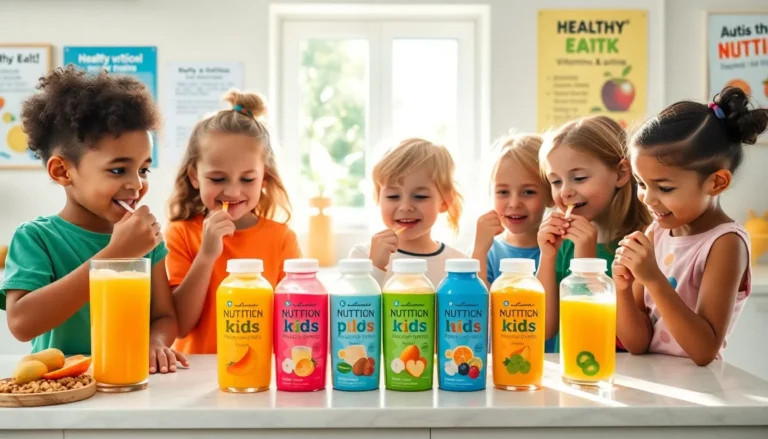Imagine a world where your child not only loves to read but also eagerly learns about nutritious foods and healthy eating habits. Sounds dreamy, right? Well, it’s entirely possible with the magic of nutrition books for kids. By introducing these vibrant and engaging books, parents can instill lifelong habits while keeping learning fun. Who knew that broccoli could be the star of a thrilling story or that carrots could play the role of a superhero? In a society obsessed with screens, fostering a love for reading, particularly about nutrition, can be a game-changer. Let’s jump into why nutrition education is crucial for kids and uncover the wonderful world of nutrition literature.
Table of Contents
ToggleWhy Nutrition Education Is Important For Kids

Nutrition education serves a powerful purpose in shaping the future of young minds. By understanding what foods do for their bodies, kids can make informed choices, developing insights that stick with them for life. When they learn about vitamins, minerals, and the impact of sugar on their energy levels, they feel empowered to make healthier decisions. With childhood obesity rates climbing, it’s more crucial than ever to instill healthy habits early on.
Also, nutrition education fosters curiosity. When children are knowledgeable about their food, they often become more adventurous eaters, ready to try new fruits, vegetables, and strange-looking grains that they might have otherwise overlooked. They’ll make connections between food and how it affects their lives, giving them the tools to live healthier, happier lives. Whether it’s understanding why skipping breakfast isn’t the best idea or realizing that snacks can be nutritious, every piece of knowledge helps guide their choices.
The Benefits Of Reading About Nutrition
Reading about nutrition offers a tour beyond taste buds. It equips kids with essential life skills, offering benefits that extend far beyond the dinner table. First, it enhances their literacy skills. Nutrition books are often filled with vivid illustrations and captivating narratives, making learning exciting. The more kids read, the better their vocabulary and comprehension skills become.
Also, these books can turn meals into fun adventures. Interactive stories that include characters cooking together not only engage kids but also spark interest in trying out recipes. This can be a brilliant way to turn dinner prep into bonding time. A sprinkle of fun can transform the kitchen into a culinary theater instead of just a place for cooking.
Finally, understanding food’s role is crucial for mental health. Learning about how food impacts moods and energy levels can empower children. They can learn that eating snacks high in sugar might result in a rush but may leave them feeling tired hours later, leading to more mindful eating as they grow.
Top Nutrition Books For Kids
When stepping into the world of nutrition literature, you’ll find a treasure trove of delightful reads that cater to various interests. Here are some of the top picks that parents should consider:
1. Fun And Engaging Picture Books
Picture books make learning about food both fun and memorable. Titles like “Eating the Alphabet” by Lois Ehlert introduce fruits and vegetables through delightful illustrations and rhythmic text. Kids will enjoy spotting their favorite foods while expanding their knowledge of colors and letters.
2. Informative Non-Fiction Books
For those who enjoy a deeper dive, non-fiction options like “The Omnivore’s Dilemma: The Secrets Behind What You Eat” by Michael Pollan Young Readers Edition provide insightful perspectives on food sources and sustainability. It encourages critical thinking about the journey of food from farm to table, making it an excellent resource for curious kids.
3. Interactive Cookbooks For Kids
Engage budding chefs with interactive cookbooks like “Cooking Class: 57 Fun Recipes Kids Will Love to Make (and Eat.)” by Deanna F. Cook. This book not only provides step-by-step instructions but also includes beautiful photographs, which guide kids along the way, inspiring them to create nutritious meals themselves.
How To Choose The Right Nutrition Book For Your Child
Choosing the right nutrition book can feel overwhelming, but it doesn’t have to be a chore. First, consider your child’s age and reading level. Picture books are perfect for toddlers and young preschoolers, while older kids may appreciate non-fiction narratives or cookbooks.
Next, identify your child’s interests. Are they fascinated by colors, animals, or sciences? Finding a book that resonates with their passions can boost excitement for reading about nutrition. Look for vibrant illustrations and relatable characters to create a more engaging experience.
Finally, seek out books that offer activities or interactive elements. Kids learn best when they can participate, so look for books that include cooking projects, scavenger hunts for healthy foods, or quizzes. This approach not only keeps the learning process lively but also helps children internalize crucial lessons.
Encouraging Healthy Eating Habits Through Reading
To truly reap the benefits of nutrition books, parents must actively engage with this literature. Reading together can become a cherished routine. After reading a book, consider cooking a recipe from it. This creates a tangible connection between the stories and the food they eat, showcasing that health can be delicious.
Also, encouraging discussions about the read can deepen understanding. Ask questions about what they learned, discuss their favorite parts, or explore the food they are curious about. Turning reading into collaborative discovery helps them form positive associations with healthy foods.
Consider integrating small rewards for trying new foods. If a child reads about kale in a book, challenge them to taste it at dinner, who knows? They may just discover their new favorite veggie. Through reading and exploring together, families can cultivate an environment filled with healthy choices.





